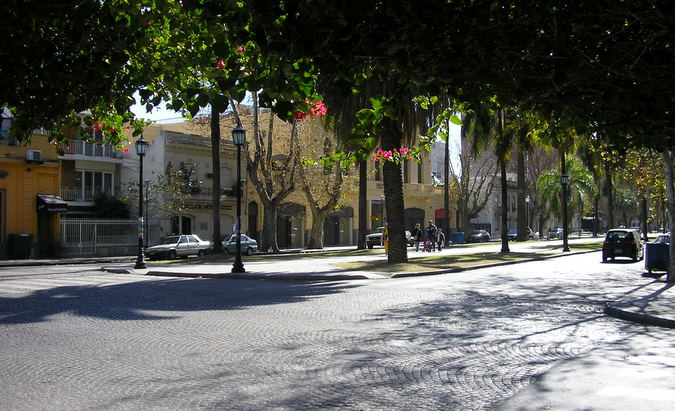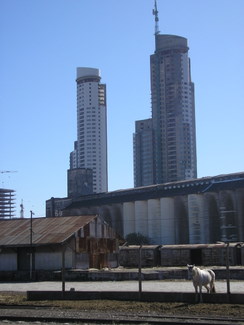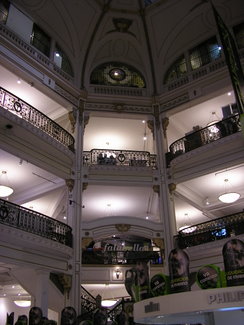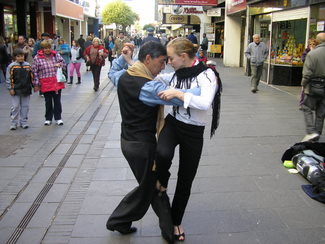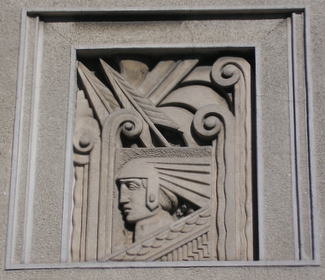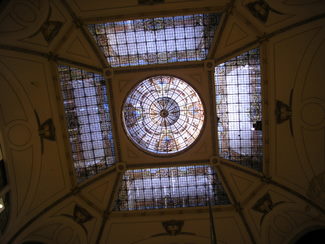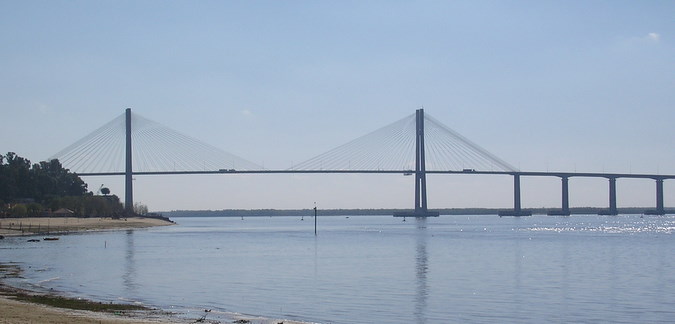|
RosarioArt, culture, and big fish on the Rio Parana32°57'S. Lat. / 60°39'W. Long. Pop: 908,000 elev: 80’
(People can walk for miles on the pedestrian mall that runs right down the middle of Boulevard Orono, from Parque Independencia to the Rio Parana. The boulevard is lined with 19th century mansions that are now consulates, restaurants and the offices of lawyers, doctors and corporations.)
Argentina’s third largest city, 165 miles north of Buenos Aires, Rosario stretches for 20 miles along the Rio Parana. From the late 19th century through the 1940's Rosario was the Chicago of Argentina, distributing the cattle wealth of the Pampas to the world. The city had an advantagous geographic position: railroad links to Chile's Pacific ports and access to the south Atlantic through the Rio Parana. This wealth built a cosmopolitan landscape of broad boulevards, French art nouveau and Spanish revival palaces, office buildings, apartments, department stores, hotels, parks, museums and theatres - and an infamous seaport red light district. World War II severely disrupted trade, followed by 40 years of chaotic Peronist and/or military governments that ended in 1983. 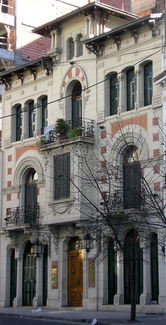
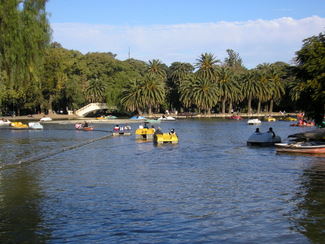
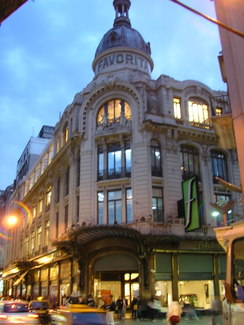
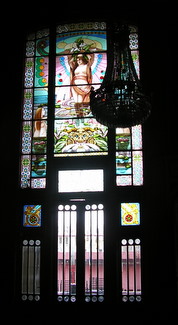
(Rosario 2010: RR tracks, horses, unused warehouses, soaring luxury condos)
Fortunately for historic architecture, Rosario's, and Argentina's, economic decline resulted in buildings being repaired, not replaced. The dramatic agricultural rebound (soy) in the 1990’s revived Rosario’s fortunes, and a pride in the city’s history has resulted in large scale restoration of its architectural heritage. Today the city has some of the finest art nouveau and deco architecture in Argentina. Two long, wide, intersecting pedestrian avenues create the central shopping district in the original downtown (Avenidas San Martin and Cordoba) crowded all day with shoppers with a lively café scene. A proud Argentine tradition is the presence of licensed professional musicians, singers and dancers entertaining, at scheduled times, on the malls. (Of course tips are always appreciated) You may well see the same entertainer playing later that evening in the Opera house or a club. 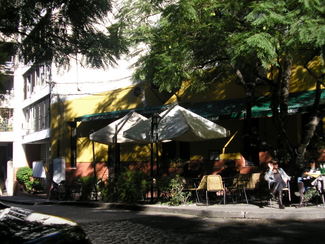
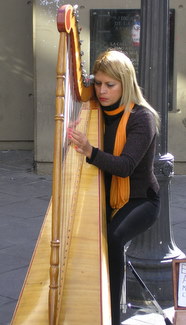
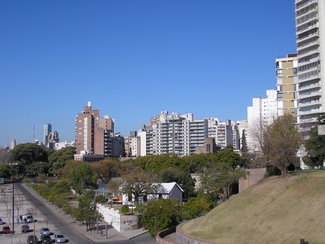
The 12-mile landscaped riverfront/cliff walk,
La Costanera,
includes restaurants, clubs, parks, playgrounds, picnic and fishing areas. Luxury condo buildings give residents beautiful views of the islands and wetlands on the eastern shore of the Rio Parana - reachable only in the summer by ferries. Imposing monuments vie for attention with antique markets. At the northern reaches of the city, in fashionable Barrio Florida, are wide sandy beaches with excellent seafood restaurants. Even in the middle of winter, the temperature was in the comfortable upper 60’s to low 70’s (F).
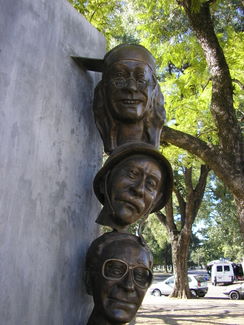
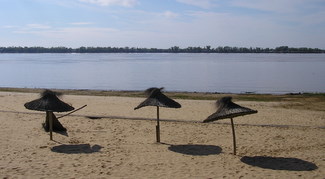
At night, the scene moves to La Costenera, and the former red light district, La Pichincha, just north of Boulevard Oreno. This barrio has become the trendy "Soho" of Rosario with galleries, antique shops and a vibrant late night club scene.
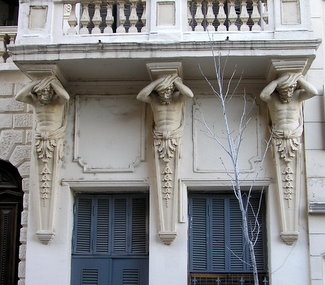
Rosario has been rediscovered by Portenos from Buenos Aires who take extended weekends to enjoy its ambiance and crowd its beaches in summer. And in May 2010, Rosario received a TripAdvisor.com, Travelers' Choice 2010 Award as #3 in its Top 10 Emerging Destinations in the World. Now that's being discovered, and I know why. On our second day, while watching an excellent tango performance on the mall, we struck up a conversation with a gentlemen. Jorge is a native of Rosario who left at the age of 18 for a life as a merchant seaman. After traveling the world and raising a family in California, he returned to Rosario for retirement. After coffee, Jorge became a tour guide for four days, and, more importantly, a new friend, showing us his Rosario. Sir Horace Rumbold was perceptive, “The banal Spanish locution which invites you to consider your host's house as your own, is no empty form of speech with these genial South Americans. They are only too ready to provide in every way for the stranger who has the good fortune to secure their good-will, and their offers of service are sometimes almost embarrassing.” from: The Great Silver River: Notes of a Residence in Buenos Ayres in 1880 and 1881
(Puente Rosario-Victoria over the Rio Parana)
You can locate Rosario by viewing a map of Santa Fe Province at:
maps of Argentine provinces
|
